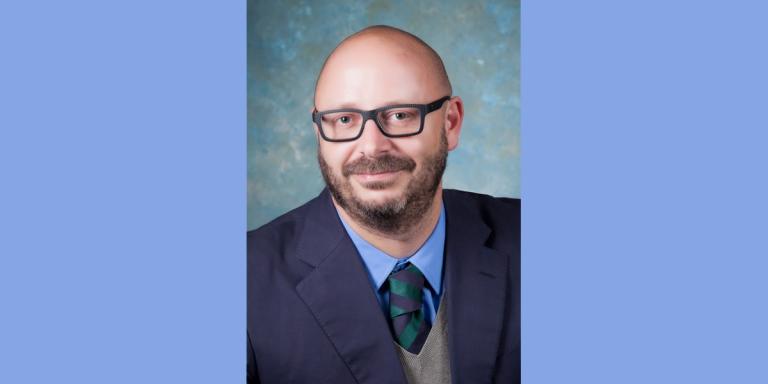
“Usually surgeons plan out a surgery based on traditional medical datasets like CTs and MRIs but when you start using advanced surgical tools like a robot, additional issues need to be considered because of the complexity of the technology.”
Elements of computer graphics, haptics, robotics and healthcare are being combined in Dr. Giuseppe Turini’s Computer Science Lab to help develop software tools that simulate surgery for doctors in pre-operative planning, intra-operative navigation, and surgical training.
“For flight and formula racing training, you have simulators. So why not have the same for surgeries?” Turini said. “A lot of research and focus in the last few years has been put on improving the training of surgeons.”
Turini is using a high-end computer graphics and gaming technology to create virtual simulators for surgeons in training that are both interactive and accurate. A haptic device ensures an immersive interaction as it allows users to control the motion but also receive force feedback depending on their on-screen actions.
Overall, the purpose of Turini’s research activity is twofold. One, to provide training modules for surgical students that do not require trauma on human subjects and secondly, to enable surgical teams to plan a surgery before they operate on a patient.
“Usually surgeons plan out a surgery based on traditional medical datasets like CTs and MRIs but when you start using advanced surgical tools like a robot, additional issues need to be considered because of the complexity of the technology,” Turini said.
Turini’s virtual simulators focus on laparoscopic surgery and minimally invasive outpatient procedures. In abdominal laparoscopic procedures, the abdomen is inflated to separate the belly from the organs creating an “operative field.” Then the surgical tools and a camera are inserted through the patient’s skin using special “ports” (called trocars) which ensure the abdomen remains inflated while performing the surgery. Turini’s software simulation allows surgeons to practice this process before trying it on a patient.
“During the placement of the trocars, you don’t really know where the best spots are, but we can ease this process providing a 3D visualization, to ensure an optimal positioning of all the surgical ports,” Turini said. “If used in the operative room, this system ‘registers’ the virtual body of the patient with the real surgical tools using an optical tracking system, providing the surgeon an augmented reality (AR) visualization via an head-mounted display (HMD).”
Turini started this software research in 2005 with the Endocas Research Center of the University of Pisa (Italy), where he completed his master and doctorate degrees. In 2014, Kettering faculty members collaborated to acquire an innovative optical tracking system as a major research instrument from the National Science Foundation which is allowing Turini to continue his research on campus.
Turini is also attempting to increase the accuracy of the simulation by using volumetric 3D models to represent virtual organs instead of their traditional three-dimensional representation that only provides a description of their superficial properties.
“It’s not enough to have just the surface information but you need to have the description of the volume,” Turini said. “To generate the volumetric representation from the shell, you process the standard 3D model to incrementally build its volumetric structure.”
For example, Turini used a three-dimensional model of a bone to generate its volumetric 3D representation, in order to enable the virtual simulation of a bone drilling procedure. Now, surgeons can practice the virtual drilling of the bone using haptic controllers in the simulation. They can visualize how the rest of the bone reacts to drilling, and then they can analyze the performance using the simulation data.
“Our simulations are interactive. We want to provide a simulation that can be used in real time,” Turini said. “We want the surgeon to play with the simulation like it’s a ‘serious’ game in order to be more prepared for real surgery on patients.”